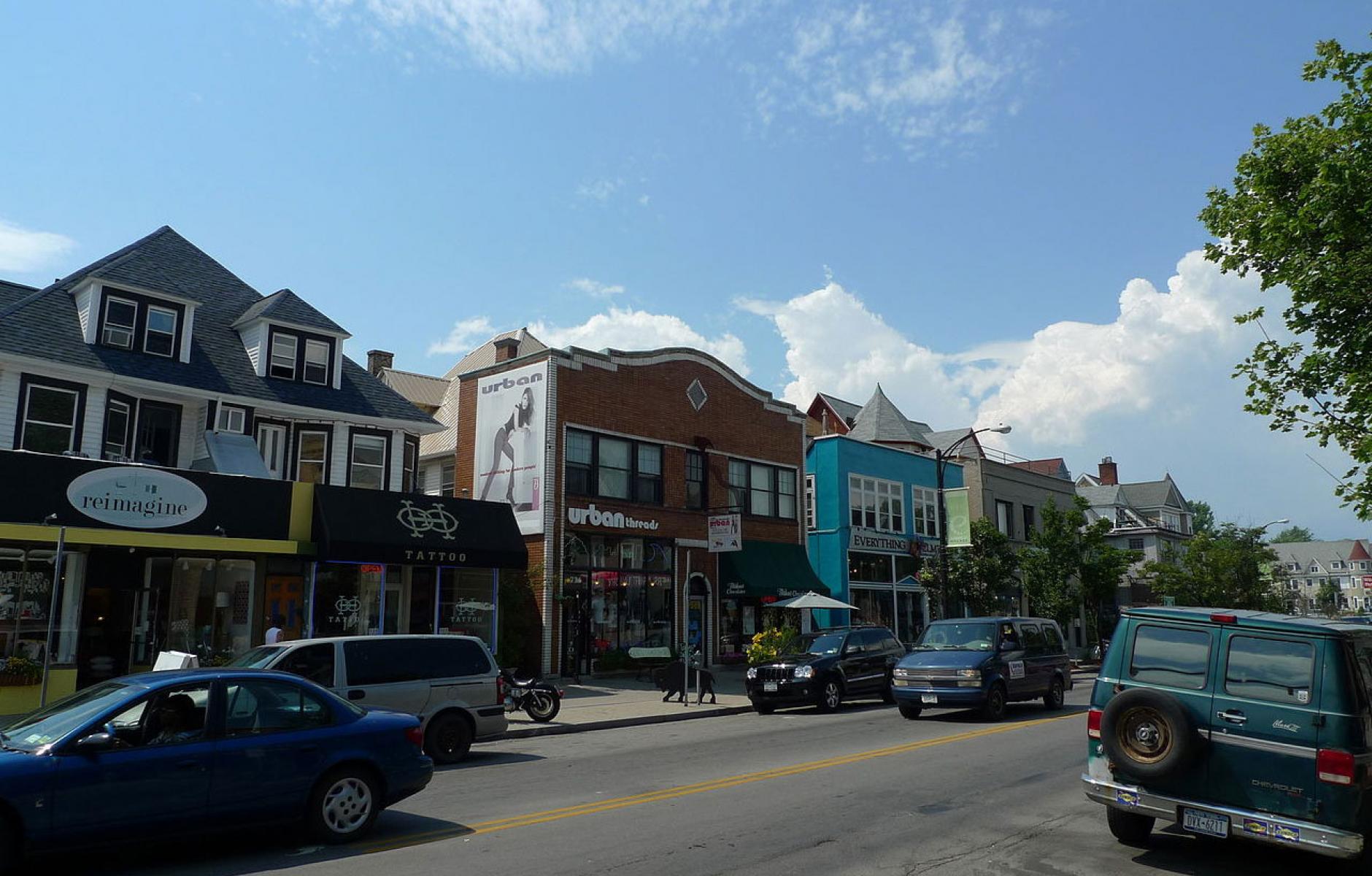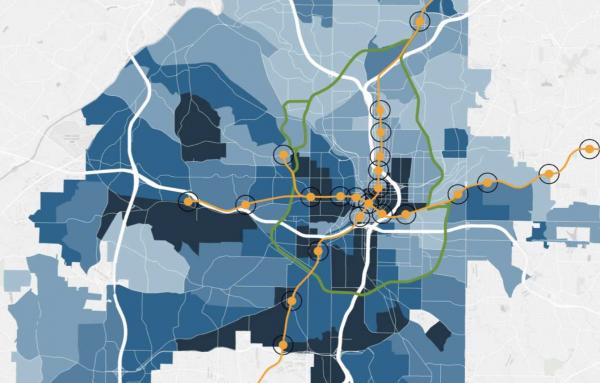
Elmwood Village in Buffalo, New York, a major city that eliminated off-street parking requirements. Such buildings can be built again without variances. Source: Wikimedia Commons.
A checklist of local government reform
Here's an outline of what municipalities can do to promote walkable urban development.
R. JOHN ANDERSON MAR. 5, 2019
As an incremental developer, principal in an urban design and architecture firm, and an urbanist, I constantly deal with institutional barriers to walkable urban places. Here is my list of pragmatic reforms that would greatly improve land-use planning and development in municipalities across the US.
All of these measures need to be calibrated and prioritized to each neighborhood and community as a whole. Local circumstances and culture will guide any effort to distinguish what reforms are essential from what are just helpful.
Critiques and comments are welcome.
- Eliminate off-street parking requirements.
- Allow on-street parking on public and private streets everywhere possible to make the most out of the public resource, provide convenient parking, and help people on the sidewalk to feel safer. Eliminate yellow and red curbs where ever practical.
- Recognize that the legal basis for zoning regulations as a police power of a municipality is public health and safety. Locally adopted building codes address public health and safety with measures peer-reviewed by the International Conference of Building Officials and the International Codes Council. These codes are based in building science, not the arbitrary principles of modern zoning. So, with a more precise and legally defensible tool in the building code, many requirements of local zoning ordinances are redundant and groundless. Eliminate minimum lot size requirements, minimum lot width, and minimum lot area per dwelling unit requirements. Eliminate minimum building square footage. Eliminate minimum setbacks, allowing the requirements of the Building Code to establish where buildings may be positioned on private parcels.
- Establish rational stormwater engineering guidance.
- Keep all travel lanes in town to a maximum of 10 feet in width.
- Recognize that the physical design of streets drives the operating speed of vehicles, (not the posted speed limit). Invest in redesign of streets using field tests to reduce speeds and improve safety for people on bikes and walking.
- Measure the taxable value per acre of buildings when reviewing building and renovation permits, planning applications, variances, zoning changes, comprehensive plans and area plans, and redesign and reconstruction of streets and other public spaces.
- Teach planning and engineering department staff, planning commissioners, and city council members the basics of development math—i.e. how buildings do or don't make money.
- Eliminate single-family zoning, inclusionary zoning, and rent control. Single-family zoning excludes missing middle housing types, raises land consumption and associated costs, and eliminates destinations for walking. Inclusionary zoning requires market-rate units at the top of the market to internally subsidize the affordable units, and some municipalities—Portland, Oregon, for example—require the units to remain affordable for as long as 99 years, and that's a heavy burden for small developers. Rent control distorts the market, harms investors, and carry high bureaucratic costs.
- Adopt comprehensive plan and general plan policy documents, and their attendant environmental reviews, with enough specificity to protect future applicants from future NIMBY environmental litigation.
- Require that local zoning ordinances and development standards be brought into compliance with comprehensive plans and general plans within 12 months. The cities in the Minneapolis/Saint Paul metropolitan region are required by law to bring their zoning in line with new or revised comprehensive plans within 12 months, to cite one local example. If there is no compliance, no money is provided for streets from the metropolitan planning organization. The effect of this requirement is that during the comprehensive planning process the staff and consultants must to pay attention to the zoning ordinance and have a working draft of the zoning revisions by the time the plan is adopted.
- Preserve small parcels. Stop consolidating small lots owned by the municipality or land bank in an effort to attract developers of large-scale projects.
- Direct municipal economic development staff to look for taxable value per acre and jobs per acre. The municipality only has so much land within its borders and should seek to make the most out of the land that is serviced with streets, sewers, utilities, police and fire fighters, schools, parks, and municipal governance. Adopt the International Existing Building Code (IEBC) and train building officials and fire officials on how to interpret the IEBC when considering the renovation or adaptive reuse of older existing buildings. Train local public works department staff and regional departments of transportation in the design of safe public streets as per the recent research of CNU and the Institute of Transportation Engineers.
- Map the procedures and review processes required to open a new business in the town. Then redesign the system to reduce the cost and delays that a local entrepreneur must navigate.
- Eliminate development impact fees. Use property taxes to pay for public facilities. Per dwelling unit development impact fees are particularly bad for small dwellings. Taxing the construction of new housing prior to occupancy adds to the capital cost. Taxing real estate after occupancy is an operating cost.







